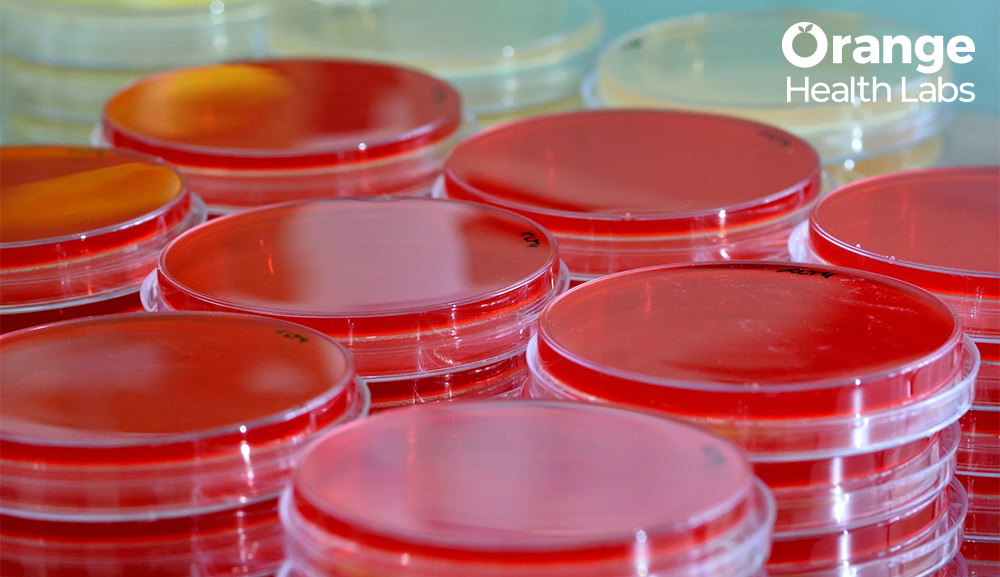Search for tests or checkups
SupportWhy Routine PPBS Testing is Crucial for Diabetes Management

Diabetes is a major global health crisis and a chronic condition where the body struggles to regulate blood sugar. This occurs when the pancreas does not produce enough insulin or cannot use insulin efficiently. As a result, glucose (sugar) builds up in the bloodstream, leading to high blood sugar levels. Uncontrolled diabetes can lead to serious complications like heart disease, kidney failure, nerve damage, and vision loss. Regular monitoring with blood sugar tests such as PPBS testing is essential in managing diabetes and preventing these complications.
What Is Postprandial Blood Sugar?
Understanding PPBS
PPBS measures the level of sugar in the blood after a meal. After consuming a meal, blood sugar levels typically start rising within 10 minutes due to glucose absorption. In healthy individuals, blood sugar peaks at about 60 minutes after eating and usually returns to normal levels within 2–3 hours. However, some individuals may not produce enough insulin or may have insulin resistance (where the body does not respond to insulin appropriately), which results in higher and prolonged high blood sugar levels after meals.
Types of Blood Sugar Tests
To monitor blood glucose levels effectively, several tests are commonly used, including fasting blood sugar (FBS), random blood sugar (RBS), hemoglobin A1c (HbA1c), and PPBS.
- Fasting Blood Sugar (FBS): Measures glucose levels after fasting for at least 8 hours, providing a baseline blood sugar level.
- Random Blood Sugar (RBS): Can be taken at any time to reflect daily fluctuations in blood sugar.
- Hemoglobin A1c (HbA1c): Provides an average blood glucose level over the past 2–3 months, offering insight into long-term control.
- Postprandial Blood Sugar (PPBS): Specifically measures blood sugar levels 2 hours after eating, making it a vital tool for evaluating how well the body manages glucose post-meal, especially in individuals with diabetes.
Why Is Regular PPBS Testing Important?
Regular monitoring of PPBS is an important practice for managing diabetes. Here are the key benefits of monitoring blood sugar levels after meals:
Detecting Diabetes Early
Regular PPBS testing allows you to recognize when your blood sugar rises too much after meals. Detecting these spikes early helps identify whether you have prediabetes or diabetes and allows you to make dietary or medication changes to prevent further complications.
Recognizing Foods That Cause Blood Sugar Spikes
Testing your blood sugar two hours after eating helps you understand how different foods affect your body, enabling you to make better dietary choices.
Improving Long-Term Sugar Control
Studies show that keeping track of PPBS can lead to lower HbA1c levels, which is essential for long-term diabetes management and reducing the risk of complications, such as nerve or heart issues.
Preventing Serious Health Complications
PPBS monitoring can help predict cardiovascular complications associated with diabetes.
Managing Gestational Diabetes
In pregnant women, monitoring PPBS is essential to prevent complications related to gestational diabetes.
Identifying Reactive Hypoglycemia
Regular PPBS testing can detect episodes of reactive hypoglycemia, a condition where blood sugar drops too low after meals, allowing for timely dietary or medical interventions.
Tailoring Treatment Plans
Monitoring PPBS helps doctors create personalized treatment plans based on your unique responses to food, ensuring that your treatment is better suited to your individual needs.
Assessing Treatment Effectiveness
PPBS monitoring helps assess how effective the treatment is at controlling post-meal blood sugar levels and indicates when adjustments are needed.
Given that humans spend about half their lives in the postprandial state, monitoring glucose after meals is crucial for better long-term metabolic control and reducing the risk of chronic complications. Monitoring postprandial blood glucose helps identify fluctuations, prevent complications, and allows for personalized treatment plans, ultimately promoting better health outcomes.
The Post Prandial Blood Sugar Test Cost is affordable and worth the health investment for managing diabetes. It is essential to know who should get the PPBS test for better health management.
Who Should Get the PPBS Test?
PPBS testing is recommended for individuals who are overweight and have risk factors for diabetes, such as high blood sugar, high blood pressure, or cholesterol issues. Women with gestational diabetes (high blood sugar during pregnancy) may benefit from monitoring their blood sugar one hour after a meal. Regular PPBS testing is also recommended for individuals with diabetes and elevated HbA1c, for monitoring medication effectiveness, and for those experiencing low blood sugar after meals.
Get Your PPBS Test at Home: PPBS Test in Mumbai | PPBS Test in Bangalore | PPBS Test in Delhi | PPBS Test in Hyderabad | PPBS Test in Noida | PPBS Test in Gurgaon
How Is PPBS Done?
The PPBS test measures your blood sugar levels after eating. To perform the test, a laboratory technician will take a blood sample about two hours after you finish your meal. It is a quick process where you may feel only a slight pinch when the needle is inserted, and any pain experienced subsides quickly. The test results are usually available soon after testing. However, the values may be affected by various factors, as discussed below.
Factors Affecting Postprandial Blood Sugar Levels
Several factors can affect postprandial blood sugar levels. Consuming meals high in carbohydrates, insufficient insulin, and physical inactivity may lead to elevated sugar levels. Hormonal changes during illness, stress, or menstrual cycles can trigger increased blood sugar. Additionally, certain medications, dehydration, and underlying health conditions can influence glucose regulation. Understanding these factors is essential to interpreting your PPBS results for effective diabetes management.
Tips for Effective PPBS Monitoring at Home
You can check your PPBS at home with a glucose meter, a small handheld device. Follow your doctor’s advice on how often to test. Store test strips in a cool, dry place to avoid inaccurate results, and record your results, including the date and time, in a notebook.
You can also conveniently conduct the Post Prandial Blood Sugar test at home to manage your health effectively.
Interpreting PPBS Results
Reviewing and discussing your PPBS results regularly with your doctor can lead to better strategies for maintaining optimal blood sugar levels. Your PPBS results can be interpreted as follows:
- Normal Range: A PPBS of 140 mg/dL (7.8 mmol/L) is considered normal.
- Prediabetes: Levels between 140 and 199 mg/dL (7.8 to 11.0 mmol/L) indicate a higher risk for developing diabetes.
- Diabetes Diagnosis: Levels of 200 mg/dL (11.1 mmol/L) or higher indicate diabetes.
Conclusion
Routine PPBS testing is crucial for effective diabetes management. It gives insight into how meals affect blood sugar and allows for informed dietary choices. Regular monitoring helps detect issues early, reducing the risk of serious complications like heart disease and other diabetes-related issues. By collaborating with a doctor to adjust the treatment plan as needed, individuals can achieve better blood sugar control.

The Role of Blood Culture Tests in Diagnosing Infections

Mental Health and Its Link To Deficiencies
